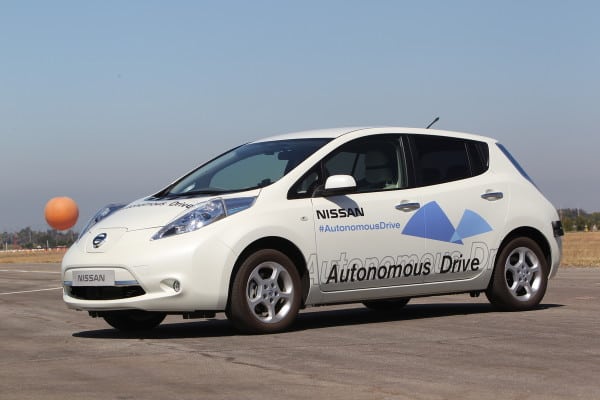Nissan made an announcement earlier this week that it will have a driverless car on the market by 2020. That’s only seven years from now. You can read more about that announcement in my piece on TorqueNews.com.
Google, often considered the research leader in autonomous driving, says that they will have their technology ready for market in about five years, but because they don’t make vehicles (and are finding it tough to find automotive partners for the idea), they won’t likely have a self-driving car that you can buy at that point. In fact, they’ve been making tentative moves towards designing their own car, which creates a whole new slew of obstacles for them to overcome.
Nissan, however, is already one of the world’s top automakers, is the world leader in electric vehicle sales, and has pioneered many of the technologies already required for self-driving vehicles (which they call their Autonomous Driving program).
What’s more, Nissan says that the self-driving car will only cost about $1,000 more than the same car in luxury form. That is an amazing prediction for them to make, as it virtually requires them to either eat the bad PR when it costs more or deliver the tech at or below that cost to consumers in order to be good to their word.
That obviously means that Nissan has a firm grasp of what’s required to make a car drive itself safely and is therefore comfortable in predicting the cost of such a system.
So how will all of that work? I outlined that in a two-part series on Torque News, but it can be nutshelled like this:
Nissan can make a car drive itself because all of the technology required to do so is already on many luxury cars being sold today. Most of the challenge in creating a driverless car is in giving the car the ability to know what’s going on around it and how to get from where it is to where it needs to be. Most of Nissan’s research the past couple of years at their Silicon Valley facility has not been into sensory and detection technology, but has instead been into the computer programming required to utilize that data in real-world driving scenarios.
In other words, all that Nissan has had to do is figure out how to program an artificial intelligence capable of piloting a car safely. The hardware required to make it possible for this to be the focus is already on the market and proven to work.
That is pretty dang awesome, I’d say. Nissan already had the sensory technology and parts, made specifically for automotive applications, on the shelf. Their only challenge has been to create software to make it work as an Autonomous Driving option. Google, on the other hand, has had to create both the hardware and the software, making their challenge far larger than Nissan’s.
This is not to detract from Google, who has truly pioneered driverless automotive – not to mention brought it into the limelight in a positive manner – but their chances of turning that tech into marketable reality are far slimmer than those of Nissan, Audi, or other automakers who are already working on the idea and nearing fruition.
Will Nissan be the first? It sure looks that way. Whoever actually has the first self-driving car, though, the ability for vehicles to pilot themselves reliably, cheaply, and safely will fundamentally change transportation forever.








